Our yard is certified by Monarch Watch as Monarch Waystation #581. (As of August 2022, there have been 40,704 Monarch Waystation habitats registered with Monarch Watch.)
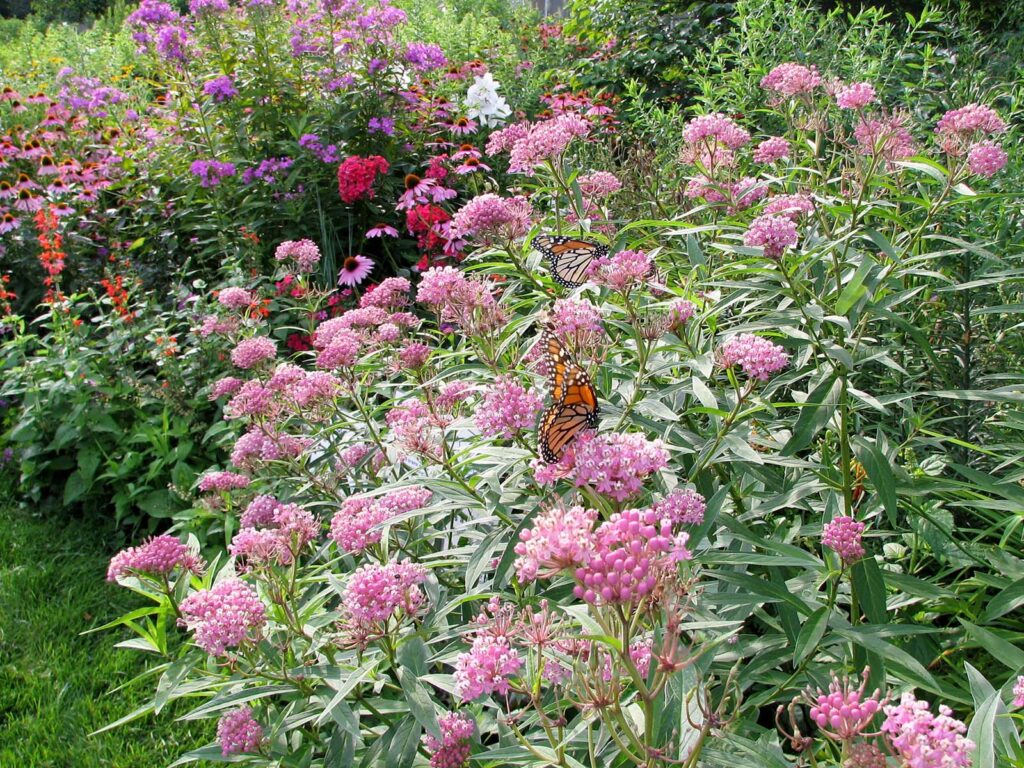
A Monarch Waystation is a big enough area (at least 135 sq. ft.) that also:
- has milkweeds,
- has nectar plants, and
- is pesticide-free.
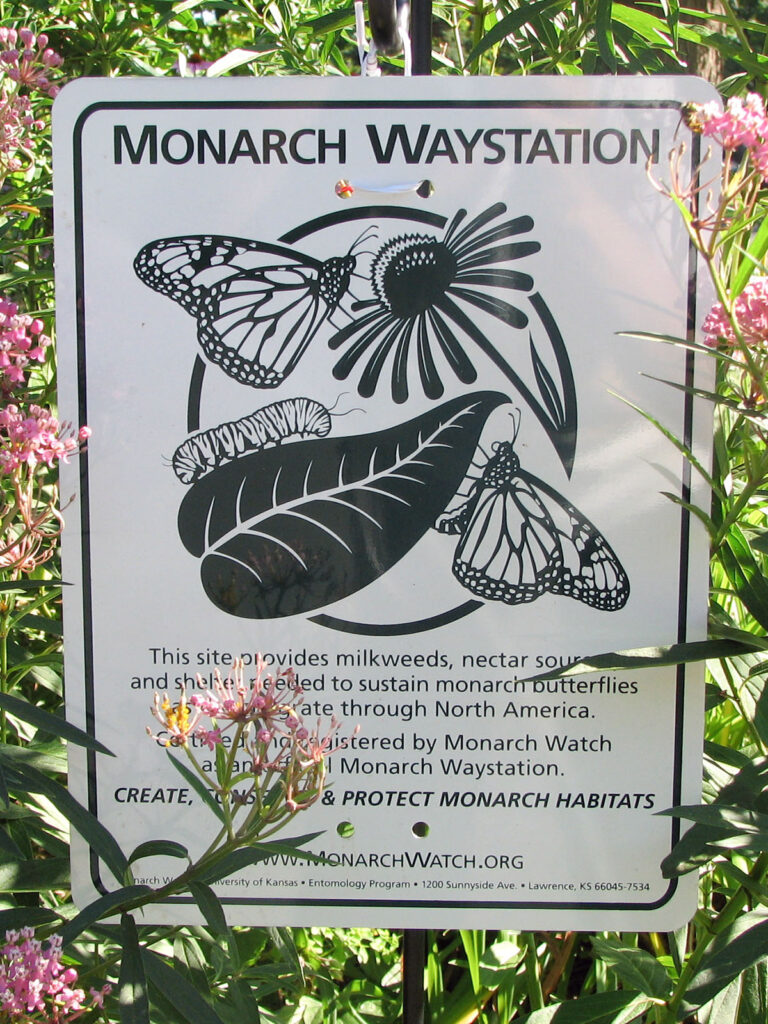
When your Waystation is certified by Monarch Watch, you’re then eligible to purchase this attractive metal Monarch Waystation sign.
I’ve displayed mine for many years now, and it still looks as good as new.
It’s a good way to spread the word about monarchs since — amazingly — many people still don’t know that monarchs need milkweeds. Spreading the word about the importance of milkweeds is essential! Perhaps people will think twice about pulling it out as a “weed” if by seeing your sign they learn that it’s essential for monarchs. And by purchasing the sign, we were also happy to help support Monarch Watch.
Milkweed
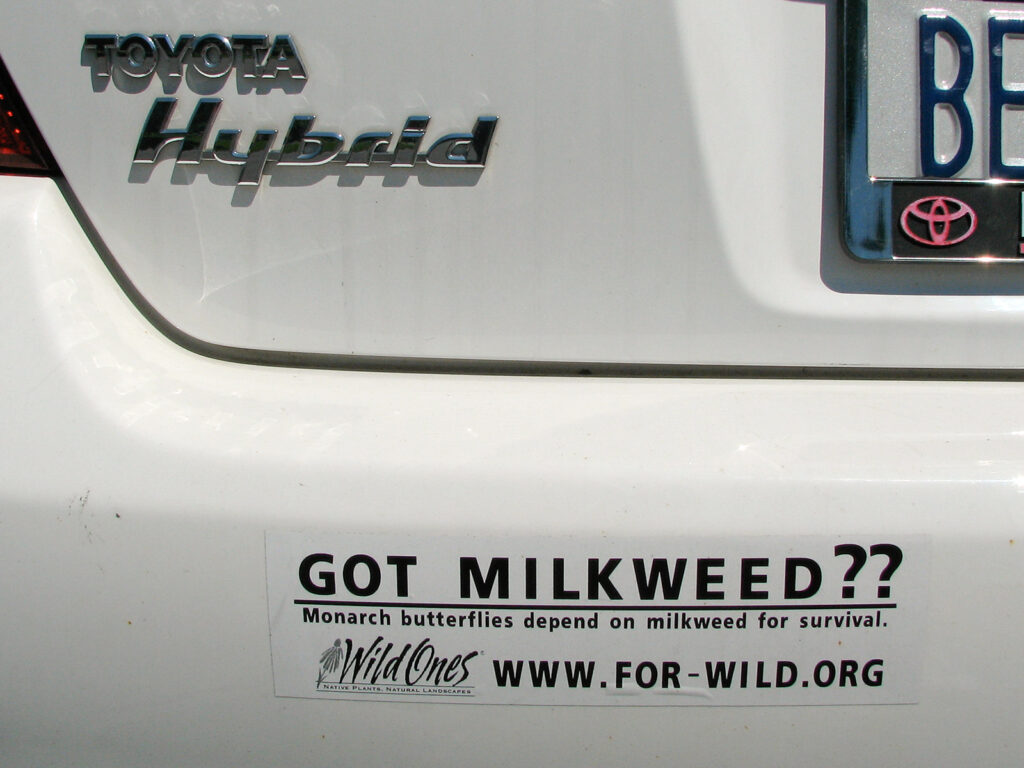
Our bumper sticker says it all!
Our Prius’s bumper sticker said: “Monarch butterflies depend on milkweed for survival.”
Our Wild Ones chapter distributed this bumper sticker and many people said that people who saw it on their cars in parking lots mentioned to them that they hadn’t known that before. It pays to advertise!
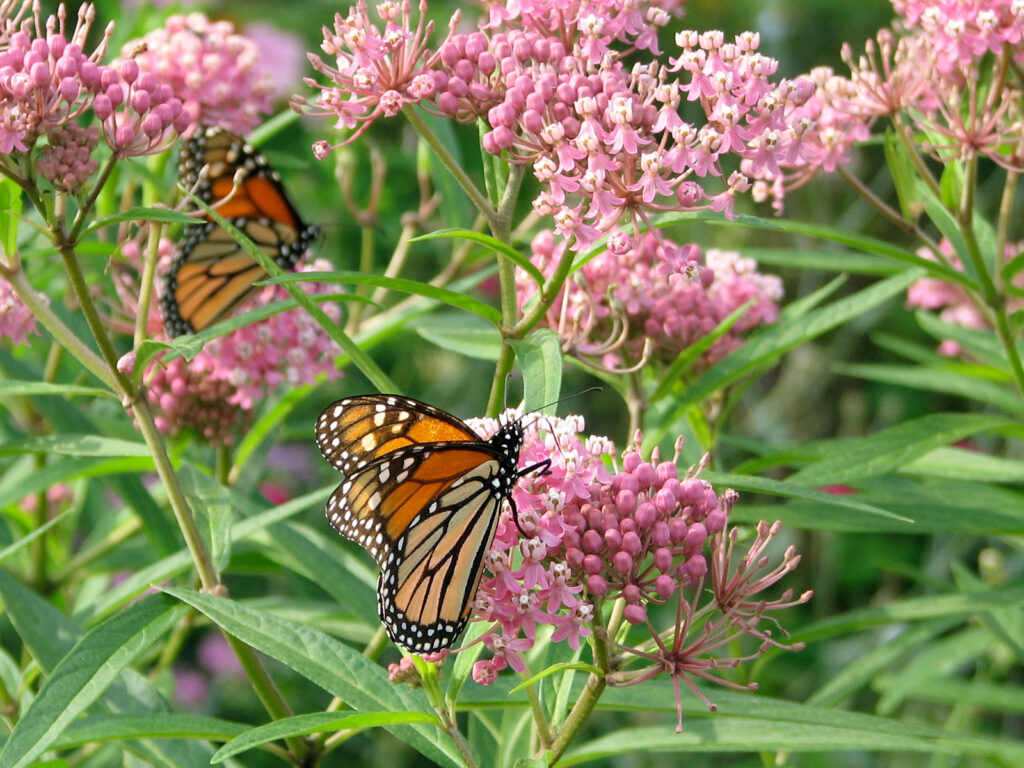
The good news is that there are many different kinds of native milkweed, and many are attractive, garden-worthy plants.
Our roadside garden has a lot of nectar plants and milkweed. I have many kinds of milkweed in my yard, but I find monarchs prefer the swamp milkweed (Asclepias incarnata) and the common milkweed (Asclepias syriaca). (Note: All milkweeds are of the genus Asclepias.)
Learn how we grow swamp milkweeds (the pink flowering plants in the picture) and about other kinds of milkweeds.
Nectar plants for monarch adults
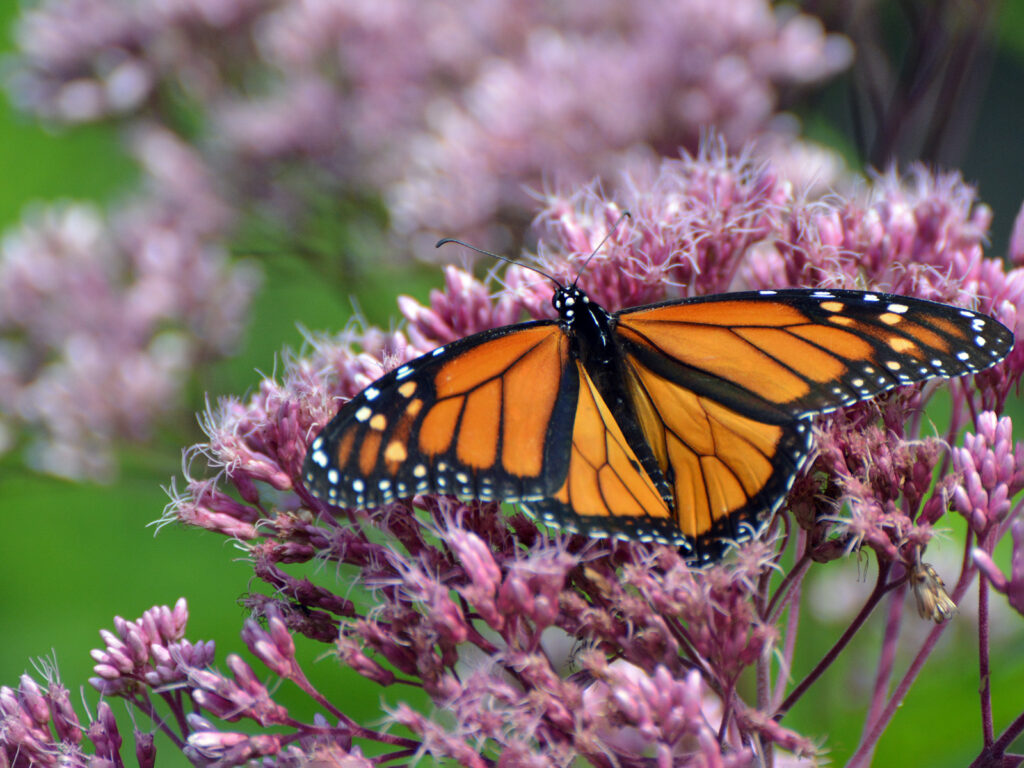
In addition to milkweed flowers, Joe-pye is a favorite nectar plant.
Below are some other sure-fire, easy-to-grow nectar plants monarchs love:
Some other native nectar plants
- milkweeds (of course)!
- Joe-Pye
- goldenrods (and they are NOT the source of fall allergies!)
- native asters (the species, not cultivars)
- purple coneflower
- Canada burnet
- boneset
- wild ageratum
- native thistle
- liatris
- bottlebrush buckeye
- senna
- hyssop
- NY ironweed
(See more nectar plants.)
Pesticide-free
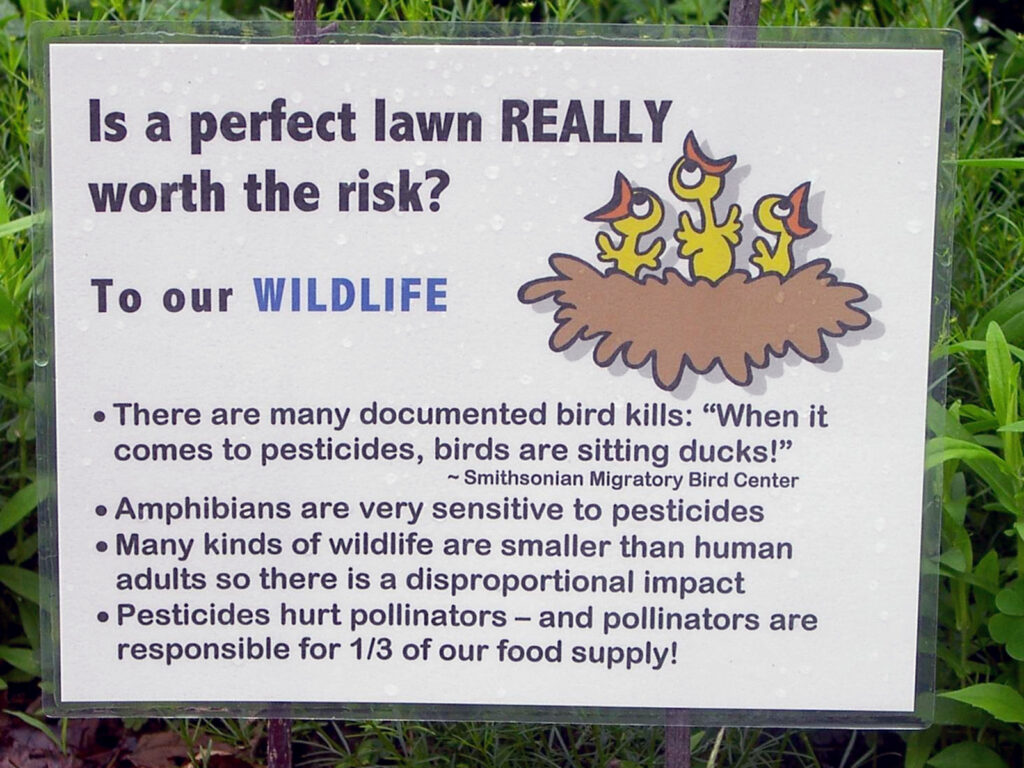
Here’s one of my pesticide signs. After all, monarchs are insects, and insecticides kill insects.
We don’t use any chemicals — insecticides, herbicides, or fertilizers — and we have a yard brimming with life, with a lot of fruits and vegetables for us, too.
(You’re welcome to download and laminate our signs and see other signs you can purchase.)
Resources
- Monarch Joint Venture:
- This partnership (of which Wild Ones is a member) has a number of excellent factsheets available on their fact sheet web page
- Frontiers in Ecology and Evolution:
- Configuration and location of small urban gardens affect colonization by monarchs
Found that “Monarch eggs and larvae were 2.5–4 times more abundant in gardens having milkweeds evenly spaced in a 1 m corridor around the perimeter, surrounding the nectar plants and grasses, than in gardens in which milkweeds were surrounded by or intermixed with the other plants.“
- Configuration and location of small urban gardens affect colonization by monarchs
- Monarch Watch:
- Information on Monarch Waystations
- IMPORTANT NOTE: Although we strongly support the goals of the Monarch Waystation program, official Monarch Watch information seems to include non-native plants, but the evidence is that native plants are BEST for native wildlife! In particular, Monarch Watch lists buddleia, sometimes known as butterfly bush, which has been recognized as invasive in some neighboring states. Don’t confuse butterfly bush with the (unfortunately similarly-named) milkweed called butterflyweed (Asclepias tuberosa), which is a fine garden-worthy plant. Few reputable sources advocate buddleia as a nectar plant. There are LOTS of better native choices for nectar plants than buddleia!
Reflections
Lazily flying
Over the flower-decked prairies,
West;
Basking in sunshine till
daylight is dying,
And resting all night
on Asclepias’ breast:
Joyously dancing,
Merrily prancing,
Chasing his lady-love
high in the air,
Fluttering gaily,
Frolicking daily,
Free from anxiety, sorrow,
and care!
~ Professor C.V. Riley
**1898** US Dept. of Agriculture
